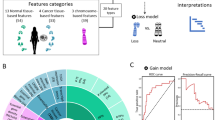Abstract
Neurofibromatosis type 1 (NF1) is one of the most common human genetic diseases affecting the nervous system and predisposes individuals to cancer, including peripheral nerve sheath tumors (PNSTs) and astrocytomas. Modifiers in the genetic background affect the severity of the disease and we have previously mapped two modifier loci, Nstr1 and Nstr2, that influence resistance to PNSTs in the Nf1−/+;Trp53−/+cis mouse model of NF1. We report here the analysis of Nstr1 in isolation from other epistatic loci using a chromosome substitution strain, and further show that a modifier locus (or loci) on chromosome 19 influences resistance to both PNSTs and astrocytomas. This modifier locus interacts with sex, resulting in sex-specific modification of tumors. Allele variability on chromosome 19 affects both the timing and the penetrance of the growth of different tumor types associated with NF1, specifically PNSTs and astrocytoma. These results indicate that modifiers of cancer susceptibility interact and affect tumorigenesis under different genetic conditions and demonstrate the power of chromosome substitution strains to study genetic modifiers.






Similar content being viewed by others
References
CBTRUS (2008) Central brain tumor registry of the United States: statistical report: primary brain tumors in the United States, 2000–2004. Central Brain Tumor Registry of the United States, Hinsdale, IL
Cichowski K, Shih T, Schmitt E, Santiago S, Reilly K et al (1999) Mouse models of tumor development in neurofibromatosis type I. Science 286:2172–2176
Easton D, Ponder M, Huson S, Ponder B (1993) An analysis of variation in expression of neurofibromatosis (NF) type 1 (NF1): evidence for modifying genes. Am J Hum Genet 53:305–313
Evans DG, Baser ME, McGaughran J, Sharif S, Howard E, Moran A (2002) Malignant peripheral nerve sheath tumours in neurofibromatosis 1. J Med Genet 39:311–314
Friedman JM, Gutmann DH, MacCollin M, Riccardi VM (1999) Neurofibromatosis: phenotype, natural history, and pathogenesis, 3rd edn. Johns Hopkins University Press, Baltimore
Loree TR, North JH Jr, Werness BA, Nangia R, Mullins AP, Hicks WL Jr (2000) Malignant peripheral nerve sheath tumors of the head and neck: analysis of prognostic factors. Otolaryngol Head Neck Surg 122:667–672
Menon A, Anderson K, Riccardi V, Chung R, Whaley J et al (1990) Chromosome 17p deletions and p53 gene mutations associated with the formation of malignant neurofibrosarcomas in von Recklinghausen neurofibromatosis. Proc Natl Acad Sci USA 87:5435–5439
Nadeau JH, Singer JB, Matin A, Lander ES (2000) Analysing complex genetic traits with chromosome substitution strains. Nat Genet 24:221–225 Erratum. Nat Genet 2000; 25(1):125
Reilly KM (2004) The importance of genome architecture in cancer susceptibility: location, location, location. Cell Cycle 3:1378–1382
Reilly KM, Loisel DA, Bronson RT, McLaughlin ME, Jacks T (2000) Nf1;Trp53 mutant mice develop glioblastoma with evidence of strain-specific effects. Nat Genet 26:109–113
Reilly KM, Tuskan RG, Christy E, Loisel DA, Ledger J et al (2004) Susceptibility to astrocytoma in mice mutant for Nf1 and Trp53 is linked to chromosome 11 and subject to epigenetic effects. Proc Natl Acad Sci USA 101:13008–13013
Reilly KM, Broman KW, Bronson RT, Tsang S, Loisel DA et al (2006) An imprinted locus epistatically influences Nstr1 and Nstr2 to control resistance to nerve sheath tumors in a neurofibromatosis type 1 mouse model. Cancer Res 66:62–68
U.S. Cancer Statistics Working Group U (2007) United States cancer statistics: 2004 incidence and mortality. U.S. Department of Health and Human Services, Centers for Disease Control and Prevention and National Cancer Institute, Atlanta
Vogel K, Klesse L, Velasco-Miguel S, Meyers K, Rushing E et al (1999) Mouse tumor model for neurofibromatosis type 1. Science 286:2176–2179
Acknowledgments
We thank R. Tuskan, K. Rogers, and staff for technical assistance, and S. Sharan, L. Tessarollo, B. Mock, N. Jenkins, and K. Hunter for helpful discussions on the manuscript. We particularly appreciate the constructive comments from anonymous scientific reviewers that improved the analysis of the presented data. This project has been funded by the Intramural Research Program of the NIH, National Cancer Institute, and with federal funds from the National Cancer Institute under contract NO1-CO-12400 to SAIC Frederick. The content of this publication does not necessarily reflect the views or policies of the Department of Health and Human Services, nor does mention of tradenames, commercial products, or organizations imply endorsements by the U.S. Government.
Author information
Authors and Affiliations
Corresponding author
Electronic supplementary material
Below is the link to the electronic supplementary material.
Rights and permissions
About this article
Cite this article
Walrath, J.C., Fox, K., Truffer, E. et al. Chr 19A/J modifies tumor resistance in a sex- and parent-of-origin-specific manner. Mamm Genome 20, 214–223 (2009). https://doi.org/10.1007/s00335-009-9179-4
Received:
Accepted:
Published:
Issue Date:
DOI: https://doi.org/10.1007/s00335-009-9179-4




